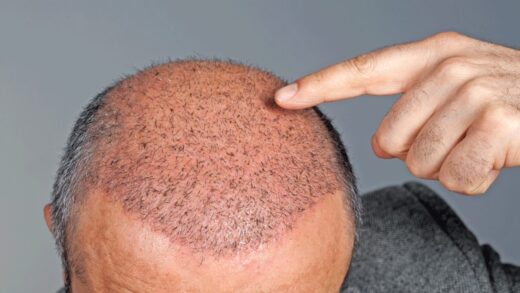Necrosis after hair transplant is one of the conditions that can be experienced after hair transplantation. Having information about the causes of this situation and how to understand will be useful for a timely intervention. Although hair transplantation may seem like a simple surgical intervention from the outside, it actually has a very difficult and complex structure. Some complications may occur after the operation. Just like the problem of necrosis.
Necrosis is the rarest but most risky complication after hair transplantation. In this complication, necrosis damge one or more cells irreversibly. The necrotic area on the scalp turns into a lifeless tissue. Necrosis is a serious health problem. When faced with such a situation, the treatment process is very difficult. For this reason, the specialist who will plant, must have good experience. An incorrect treatment method may cause irreparable results.
Causes of Necrosis After Hair Transplant Complication
Pre-existing conditions in the patient, such as:
- Smoking as the main cause of scalp necrosis.
- diabetes
- photo-damage (changes collagen and vasculature)
- long-term baldness
Poor surgical techniques:
- incorrect use of the receptive field
- very closely placed hair follicles
- transplanting too many hair follicles at once
- excessive use of epinephrine in the procedure

Scalp necrosis, which was very common in the past, accrossed in the days after the closure of the donor area during the old technique, Follicular Unit Transplantation (FUT). Currently, the reason of it is the extraction of hair follicles during Follicular Unit Extraction, also known as FUE hair transplantation, and the “overfilling” of hair follicles in the recipient areas.
Symptoms of Necrosis Complication
There are a too many signs of necrosis complications, which indicate that the skin tissue is about to die or going weak. In necrosis, a very deep crusting exist on the skin. This situation can occur on the back of the person’s head or in the area where hair transplantation is.
When does necrosis occur? It is known that necrosis can occur within 2 weeks or 4 weeks following hair transplantation. If the person who has had hair transplantation sees such a situation, he should immediately inform his doctor. The hair transplant specialist removes the necrotic area in order to treat the necrosis. This person can be treated for necrosis by performing a hair transplant and fat grafting. If the necrosis remain untreated both the stain remains in the area where the necrosis exist and hair formation does not occur in that area.
In order not to see such complications, specialist and experienced doctors must perform hair transplantation.
If you need more information all about the hair transplant, our experienced and helpful medical staff is ready to serve you. Please visit Erdem Clinic website and fill out the contact form to reach us.
Frequently Asked Questions
What does an infected hair transplant look like?
Excessive redness and swelling, generally accompanied by redness and discomfort, are unmistakable indicators of infection after hair transplant surgery. Bleeding might also be caused by an infection. In most cases, this means that the negative effects of hair restoration surgery worsen rather than lessen after a week.
Can your body reject a hair transplant?
You are your own donor for a hair transplant, unlike organ transplants. There is no such thing as a donor or a beneficiary. Without immune-suppressant medicines, your body would reject hair, follicles, and tissue from someone else (other than an identical twin).
What is crust after hair transplant?
The scabs that form over each of the grafts inserted during the treatment are commonly referred to as the crusts that occur following hair transplantation surgery.